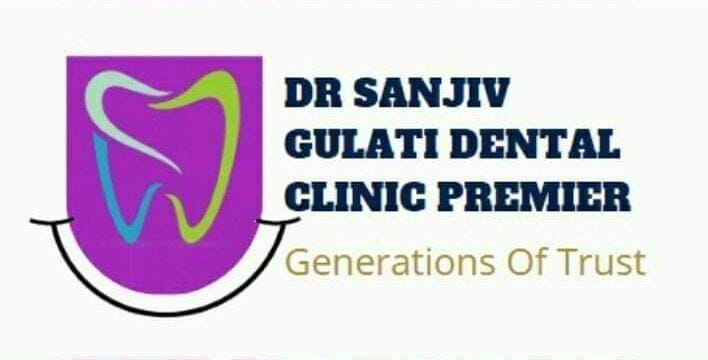Oral Cancer
Oral Cancer
Introduction:
Oral cancer is a serious and potentially life-threatening disease that affects various
parts of the mouth, including the lips, tongue, gums, and throat. Early detection and treatment are
crucial for improving outcomes.
Understanding Oral Cancer:
Oral cancer refers to the abnormal growth of cells in the oral cavity
or the oropharynx. It can develop in the lips, tongue, cheeks, floor of the mouth, hard and soft
palate, tonsils, and throat. The majority of oral cancers are squamous cell carcinomas, which
originate from the surface layers of the mouth.
Risk Factors for Oral Cancer: Several factors increase the risk of developing oral cancer:
1. Tobacco and Alcohol Use: Smoking or chewing tobacco products and heavy alcoholconsumption significantly raise the risk of developing oral cancer. The combined use of tobacco and alcohol further amplifies the risk.
2. Human Papillomavirus (HPV) Infection: Certain strains of HPV, particularly HPV16, have beenlinked to the development of oral cancer. Engaging in oral sex with an infected partner canincrease the risk of HPV-related oral cancer.
3. Sun Exposure: Prolonged and unprotected exposure to the sun's ultraviolet (UV) rays canincrease the risk of lip cancer.
4. Age and Gender: Oral cancer tends to occur more frequently in individuals over the age of 45.Additionally, men have a higher incidence rate compared to women.
5. Poor Oral Hygiene: Neglecting oral hygiene practices can contribute to the development of oralcancer. Chronic irritation and inflammation of the oral tissues increase the risk.Symptoms of Oral Cancer: Being aware of the following signs and symptoms can aid in the early
detection of oral cancer:
1. Persistent Sores or Ulcers: Non-healing sores or ulcers that persist for more than two weekswithout any obvious cause should be evaluated by a healthcare professional.
2. Red or White Patches: The presence of red or white patches in the mouth or on the lips that donot resolve should be examined by a dentist.
3. Unexplained Bleeding: Unexplained bleeding in the mouth, throat, or gums should beinvestigated promptly.
4. Difficulty Swallowing or Chewing: Persistent difficulty in swallowing, chewing, or moving thejaw or tongue should be evaluated by a medical professional.
5. Changes in Voice or Speech: Sudden changes in voice quality or speech patterns, such as slurredspeech, can be indicative of oral cancer.Diagnostic Methods: If oral cancer is suspected, healthcare professionals may employ the
following diagnostic methods:
1. Physical Examination: A thorough examination of the oral cavity, including the tongue, throat,and neck, is conducted to check for abnormalities.
2. Biopsy: If suspicious lesions or growths are identified, a tissue sample (biopsy) is taken forlaboratory analysis to determine whether cancer cells are present.
3. Imaging Tests: Imaging techniques such as X-rays, CT scans, MRI scans, or PET scans may beused to assess the extent of the cancer's spread.Prevention of Oral Cancer: While not all cases of oral cancer can be prevented, certain measures
can significantly reduce the risk:
1. Avoid Tobacco and Limit Alcohol Consumption: Refrain from smoking or chewing tobacco
products, and limit alcohol consumption to reduce the risk of oral cancer.
2. Sun Protection: Protect your lips from excessive sun exposure by using lip balm
Treatment Approaches for Oral Cancer: The treatment of oral cancer typically involves a
multidisciplinary approach, combining different modalities to achieve the best possible
outcomes. The primary treatment options for oral cancer include:
1. Surgery: Surgical intervention is often the primary treatment for early-stage oral cancer. The goalis to remove the tumor and affected tissues while preserving the function and aesthetics of the mouth. Depending on the extent of the cancer, the surgeon may perform a resection, excision, orneck dissection to remove lymph nodes.
2. Radiation Therapy: Radiation therapy uses high-energy beams to kill cancer cells and shrinktumors. It can be used as the primary treatment for early-stage oral cancer or in combination withsurgery for advanced cases. External beam radiation therapy and brachytherapy are two commontypes used in oral cancer treatment.
3. Chemotherapy: Chemotherapy involves the use of drugs to kill cancer cells. It may beadministered before surgery to shrink tumors, after surgery to destroy remaining cancer cells, orin combination with radiation therapy for advanced cases. Chemotherapy can also be used topalliate symptoms in late-stage or recurrent oral cancer.
4. Targeted Therapy: Targeted therapy drugs specifically target certain molecules or pathwaysinvolved in cancer growth. These drugs interfere with the cancer cells' ability to divide and grow.Targeted therapy may be used in combination with other treatments for advanced oral cancers.
5. Immunotherapy: Immunotherapy harnesses the body's immune system to fight cancer cells. Itstimulates the immune response to recognize and attack cancer cells. Immunotherapy drugs maybe used in cases where other treatments have been ineffective, and they have shown promisingresults in certain oral cancer cases.
Conclusion:
Oral cancer treatment has made significant advancements in recent years, offering improved outcomes and enhanced quality of life for patients. Early detection, multidisciplinary approaches, and personalized treatment strategies have revolutionized the management of oral cancer. If you have concerns or notice any signs or symptoms related to oral cancer, it is crucial to seek immediate medical attention. Early diagnosis and timely intervention play a pivotal role in successful treatment and long-term prognosis.

